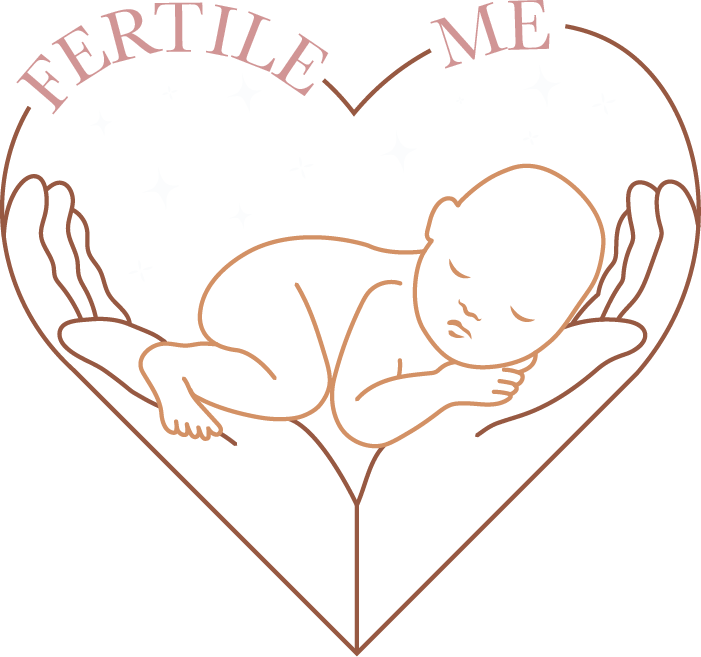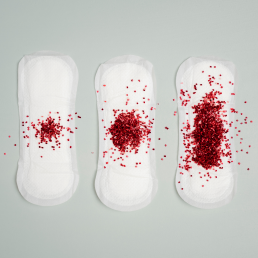Natural Tips To Get Your Period Back
Overview
Amenorrhea is a medical term that describes the absence of menstruation in women of reproductive age.
Doctors consider amenorrhea to be normal when you are pregnant or in menopause since both of these conditions stop the process of menstrual bleeding.
When it comes to classification, we have two types of amenorrhea:
- Primary amenorrhea – this refers to the absence of menstrual cycles ever since the beginning of puberty. In other words, females don’t have their menstrual bleeding by the age of 15–16, and it remains this way.
- Secondary amenorrhea – this refers to missing 3 consecutive menstruations after having normal periods for the previous 9 months.
By far, the second type is the most common, as it can be the manifestation of several medical conditions (more on that later).
In this article, we will focus on secondary amenorrhea, discuss its causes, and cover the natural treatments that may help in getting your period back.
Causes of secondary amenorrhea
To understand what occurs in secondary amenorrhea, we first need to tackle a few basic principles about the female reproductive cycle.
In normal conditions, estrogen rises sharply before and during ovulation to prepare the uterine lining for conception. As a result, the endometrial layer of the uterus thickens and develops new blood vessels.
When conception doesn’t happen, the levels of estrogen drop significantly, which sheds the new tissue of the uterine wall.
Finally, that excess tissue covered with blood gets released via the vagina, in what’s known as menstrual bleeding (i.e., menstrual period).
As you can see, this process has several factors that play different roles. Consequently, any disruptions to these processes could eventually precipitate secondary amenorrhea.
Here are the most common causes of secondary amenorrhea:
Hormonal imbalances
Hormonal imbalances in the levels of estrogen, progesterone, luteinizing hormone (LH), or follicle-stimulating hormone (FSH) could all lead to amenorrhea.
These disturbances could be the result of pituitary tumors, hyperthyroidism, pharmacological drugs (e.g., hormonal birth control, chemotherapeutic agents, antipsychotic drugs), and more.
Polycystic ovarian syndrome (PCOS) is a common gynecological condition characterized by the formation and growth of tiny fluid-filled cysts on the surface of the ovaries.
These structures are benign and do not develop into cancer; however, this doesn’t make them completely harmless, as they can disrupt fertility, insulin sensitivity, and
Lifestyle factors
Fat cells are crucial for the production of female sex hormones (e.g., estrogen, progesterone).
You see, these cells have an enzyme known as aromatase, which transforms androgens (i.e., testosterone) into estrogen through a complex biochemical reaction. As a result, healthy women always have negligible levels of testosterone in their bloodstream.
Unfortunately, female athletes or those with eating disorders (e.g., anorexia nervosa) who have less than 15% of body fat may develop secondary amenorrhea due to the low number of fat cells capable of triggering the aromatase-mediated reactions.
Additionally, overweight women could also disrupt their hormonal balance, leading to secondary amenorrhea.
Finally, chronic emotional stress stimulates the production of cortisol in a continuous manner, which is a steroid that interferes with the production of female hormones.
In general, these are the most common causes of secondary amenorrhea in women of reproductive age.
If you miss your period 3 times in a row, you may want to speak to your primary care physician or OB-GYN.
The differential diagnosis of secondary amenorrhea
The differential diagnosis of secondary amenorrhea is confusing and relatively long. For this reason, you need an experienced physician to get a prompt diagnosis and treatment plan.
With that said, here are the possible diagnoses that could explain secondary amenorrhea:
Anxiety disorders – anxiety disorders are characterized by high levels of stress hormones (e.g., cortisol), which disrupt the hormonal balance of your menstrual cycle.
Anorexia nervosa – this is a mental disorder that causes the patient to see a distorted image of themselves in the mirror, which pushes them to starvation in an attempt to lose more weight. When anorexia nervosa is severe, the body fat percentage drops below 15%, leading to secondary amenorrhea.
Luteinizing hormone deficiency – LH is a crucial hormone for the menstrual cycle since it stimulates the ovaries to produce estrogen. As we explained above, diminished levels of estrogen translate into the absence of uterine wall thickening. This, in turn, leads to secondary amenorrhea.
Ovarian insufficiency – in this condition, the ovaries mature before time (before 40 years of age). Consequently, they don’t produce sufficient amounts of estrogen and progesterone or release eggs every month.
Congenital adrenal hyperplasia (CAH) – in CAH, the adrenal glands produce large amounts of androgens (e.g., testosterone), which disrupts the female reproductive cycle.
Depression – depression is a mental disorder that presents with a variety of signs and symptoms, including reduced libido and menstrual cycle abnormalities.
Pregnancy diagnosis – as we mentioned in the first section, becoming pregnant maintains the production of estrogen, which prevents the shedding of the endometrial layer.
Prolactinoma – this is a benign tumor that ramps up the production of prolactin, which is a hormone that’s usually released during breastfeeding. Prolactin acts on the hypothalamus to inhibit the production of reproductive hormones (e.g., FSH, LH).
Iatrogenic Cushing syndrome – taking corticosteroid medications for a long period of time leads to a condition known as iatrogenic Cushing syndrome. As a result, the production of estrogen and progesterone gets disrupted.
When to see a doctor
In general, most women experience some menstrual irregularity in their lifetime. Therefore, you won’t always have to see a doctor whenever you miss one period.
However, visiting your doctor becomes essential in the following scenarios:
- The sudden disruption of your period that lasts more than 3 months
- Experiencing two or more periods within 21 days
- Dysmenorrhea (i.e., painful and heavy bleeding)
- Your periods last longer than a week
After visiting your doctor, he/she will narrow down the list of differential diagnoses to pinpoint the underlying cause of your symptoms. Your doctor may also prescribe a few drugs to correct any abnormalities.
In the next section, we will discuss some natural treatment options to get your period back.
Natural therapies to get your period back
1. Focus on your weight
Throughout this article, we covered many conditions that disrupt normal weight, which leads to secondary amenorrhea. To avoid this issue, try your best to maintain a healthy weight by making the right dietary choices and exercising regularly. According to studies, overweight women are more prone to develop irregular menstrual cycles than those with normal body mass indexes (BMI).
You should keep in mind that losing too much weight could also trigger secondary amenorrhea.
If you believe that your weight is causing your menstrual cycle irregularity, be sure to talk to your primary care physician about this issue.
2. Exercise regularly
Regular exercise offers the body a myriad of health benefits, including the optimization of metabolism, weight, and cardiovascular health. However, researchers also found a correlation between regular exercise and a reduction in the risk of menstrual irregularities.
In fact, exercise and diet are part of the primary approach to treat PCOS.
3. Practice yoga
Yoga is an effective treatment for several menstrual disorders.
In a 2013 study, researchers recruited 126 participants who practiced yoga for 35–40 minutes, 5 days a week, over 6 months. After analyzing the results, researchers concluded that yoga lowers the risk of menstrual irregularities and optimizes the balance of different hormones (e.g., LH, FSH).
In addition to this, yoga reduces the cramping pain and emotional symptoms associated with your period. As a result, you’re less likely to experience depression or anxiety.
Overall, practicing yoga on a regular basis (even for beginners) can dramatically optimize the menstrual cycle and reduce the risk of disorders.
4. Cinnamon (Cinnamomum verum)
Cinnamon seems to be beneficial for numerous menstrual issues, such as secondary amenorrhea. In a 2014 study, researchers found that cinnamon regulates menstrual cycles and treats women with PCOS, which restores menstrual periods.
5. Black Cohosh root (Actaea racemosa)
Black cohosh has several effects on female reproduction, including the promotion of the menstrual cycle and the relief of post-menopausal symptoms. According to one study, this herb interferes with the opiate receptors in the brain to regulate the menstrual cycle. Studies also found that it contains phytoestrogens, which help with the process of uterine wall lining and shedding.
6. Common Nettle (Urtica dioica)
Urtica dioica is a herb that belongs to the Urticaceae family. Ancient Iranian physicians used this herb to increase libido and induce menstruation in women.
This herb is also a potent antioxidant, which helps with several gynecological conditions that cause secondary amenorrhea, such as PCOS.
7. Dong Quai root (Angelica sinensis)
Dong Quai is a herb that has been used in China, Korea, and Japan for centuries to treat various female reproductive pathologies. Researchers stated that despite the lack of well-organized clinical trials that support the effectiveness of this herb, there is some evidence that demonstrates that Angelica sinensis helps patients with secondary amenorrhea by regulating hormones, promoting blood flow to the ovaries and uterus, and increasing uterine tone.
8. White Peony (Paeonia officinalis)
Similar to Angelica sinensis, Paeonia officinalis promotes blood flow to the reproductive organs, which allows the irrigation of the ovaries and the deeper layer of the uterus. Add to that the hormonal-balancing properties of this herb, and you got yourself the perfect recipe to treat secondary amenorrhea.
The conceive tea blend is a great support to naturally get your period back.
Takeaway message
Secondary amenorrhea is an extremely common condition that affects millions of women around the globe. This condition has several causes, diagnoses, and treatment options.
Hopefully, this article served as an introduction to the potential natural treatments to get your period back. If you still have questions or concerns about secondary amenorrhea, feel free to share your thoughts in the comment section below.
For any unusual signs and symptoms, don’t hesitate to contact your primary care physician or OB-GYN.

